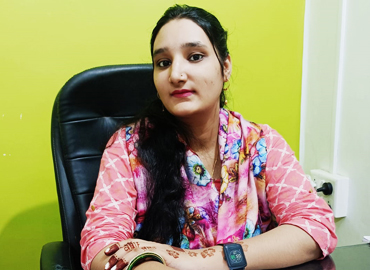A perfect diabetes diet plan with the help of a certified diabetes dietitian
The cornerstone of both diabetes control and a healthier lifestyle for all is a balanced diet.
We think that there is no universal solution for managing diabetes and diet, therefore individuals should see a trained diabetes dietician in Mumbai to create a plan that works for them.
The key to having a healthy diet is to try items from all five food groups:
· The veggies and beans or legumes
· Fruit; whole grains, including breads, cereals, rice, and pasta; lean meats, fish, poultry, tofu, tempeh, and nuts;
· Cheese, yoghurt, milk, or non-dairy plant-based substitutes enriched with calcium.
For better diabetes management:
· Select a diet higher in whole, unprocessed foods and lower in packaged or processed meals.
· Eat frequently and distribute your meals evenly throughout the day.
· Learn which foods are high in carbohydrates and in what quantities are best for you.
· Consume a diet low in fat, especially saturated fat.
Check with your medical provider to see if you need to consume between-meal snacks if you use insulin or diabetic medications.
Since each person's needs are unique, it is recommended that individuals with diabetes consult with a qualified dietitian in addition to their diabetes team to receive personalized advice.
Equilibrium energy
Finding the ideal dietary balance for you is the key to eating healthfully.
It's crucial to balance the quantity of food you consume with the energy you expend during exercise and other activities. Gaining weight might result from providing your body with too much fuel.
Restrict your intake of high-energy items including takeout, cakes, biscuits, fruit juice, lollipops, chocolate, and savoury snacks. To control how much energy you eat, you can also pay attention to how much you eat and adjust your portion sizes. Find out more about eating mindfully.
In addition to a nutritious diet, regular exercise can help you maintain a healthy weight, lower your blood fat levels (triglycerides and cholesterol), and control your blood glucose levels.
Thoughtful eating
Nobody likes to feel overstuffed and overfull, so practising mindful eating can help you both appreciate your food more and avoid overindulging.
If the item being consumed contains carbohydrates, overeating might raise blood glucose levels, inhibit weight reduction, or result in weight gain. Thus, you may relish your food, control your blood sugar and weight, and eat consciously.
Aware eating with the help of Dt. Rukhsana Azhar from Diet4U Wellness
Put your phone, book, or newspaper down and concentrate on your meal. You may also minimize distractions during dining by turning off the television.
Savour your meal slowly and thoroughly. Use all of your senses when eating, savouring every moment of the experience—taste the tastes, smell the flavour, feel the feeling of eating in your mouth, and take in the sight of the meal. When placing the meal in your mouth, set down any cutlery you may be using. As you chew, take your time. Next, gulp down the meal.
If they eat consciously, most people will eat less—even when it comes to their favourite treat foods. It gives your body time to signal to your mind, "That's enough."
When you eat, pay attention to your body's cues that indicate when you've had enough of food or when you're no longer hungry. Pay attention to the cues that indicate when you're comfortably full and remain inquisitive and aware. When you're eating, stop and consider how the meal tastes and how hungry you are right now.
To what extent am I hungry or full?
You may rate how starving or full you are on a rating system of one to ten by considering how starving you are beforehand a meal and setting a goal of how you want to experience yourself at the conclusion of the meal. This can help you become more aware of your fullness and hunger cues, though it may take a little time to re-learn them.
Eat till you are satiated, but keep in mind how you want to feel afterward. Trust your delicate sensations of hunger or fullness. Indulge your hunger. When you are full, or even just when you are indifferent, stop eating. After eating, consider how you feel. If you find that you are more hungry or full than you had intended, don't be hard on yourself; instead, remember how you felt during the meal to help you control how much you consume at the next one that is similar.
What is the purpose of my diet plan for diabetes in Mumbai?
Think about your decision-making process while selecting specific foods and serving sizes. Is it ingrained? perhaps ease of use? perhaps anxiety and feelings?
You might be shocked to realize how many things affect how you eat. To serve greater amounts on a large plate, for instance, or lesser portions on a smaller dish, depends on the serving size you choose.
Mood-driven eating
Most people are aware of the effects that stress, sadness, or other emotional states have on eating habits. We frequently eat goods "sometimes" or as treats, frequently in larger quantity than we would ordinarily. Then, you start to feel "bad" or as though you haven't succeeded in reaching the idealized, healthy eating lifestyle. It becomes a terrible eating cycle when we feel "bad" since we usually eat a lot more that "sometimes" or treat food poorly.
Be kind to yourself. Show kindness. Talk to yourself like you would with someone else. You may "get back on the horse" and continue working toward a healthy diet plan tomorrow since it's a new day.
And never forget to relish your cuisine!
Consume a range of legumes and beans
One of the best ways to make sure you are receiving the vitamins and minerals you require to remain healthy is to eat a wide range of veggies every day. In addition to being high in fibre and essential nutrients, veggies have a low kilojoule content, making them a fantastic food to eat in bulk without worrying about gaining weight. The majority of Australians should eat more veggies.
We ought to all be consuming at least five servings of veggies each day to maintain optimum health. A serving of veggies is equivalent to one medium potato or one cup of cooked green or orange veggies, beans, lentils, or other legumes; one cup of salad.
Vegetable varieties include:
· Broccoli, cauliflower, carrots, peas, corn, and zucchini
· Sweet potato, pumpkin, and potato
· Baby spinach leaves, cucumber, tomato, kale, and lettuce
· Lentils, kidney beans, and chickpeas
Just as nutrient-dense as fresh vegetables, frozen or canned veggies are excellent substitutes. These can also be easier to prepare, less expensive, and more accessible in isolated locations. Just be sure to select canned veggies that haven't had any salt added.
Have trouble eating all five servings of vegetables? Use these suggestions to include more vegetables in your diet:
· Consume red, green, orange, and white veggies, among other hues, on a daily basis.
· To make a quick and wholesome snack, chop veggies into sticks and keep them in the refrigerator.
· Incorporate veggies into each meal. Add shredded or chopped vegetables to casseroles, pasta dishes, and soups. Beans go well with meat recipes like taco mince or Bolognese sauce.
· To get the greatest deal and maintain freshness for a long time, buy veggies in a period or from nearby sources like farmers' markets.






